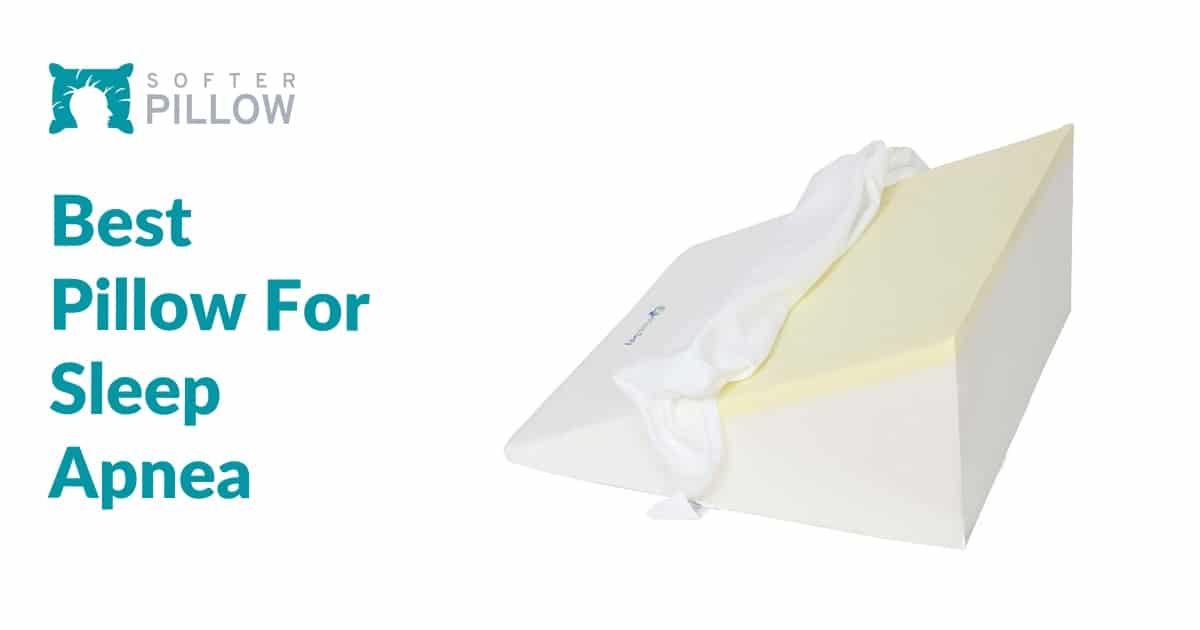
Do you snore a lot? Does insomnia keep you from getting a good night’s sleep? If so, you may be suffering from sleeping apnea.
Sleep apnea should not be taken lightly as this can lead to more serious illnesses. Sleep apnea can actually put you at risk of having chronic fatigue, heart disease, liver disease, and even Type 2 diabetes.
Did you know that getting a new pillow designed specifically for sleep apnea sufferers could do you a world of good? Wonder how? Read our Top 5 Pillows for Sleep Apnea Review!
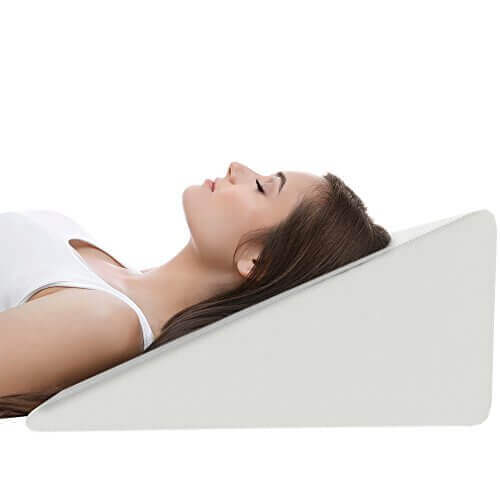
This wedge pillow from Splendoress features a 12” elevation which is ideal for cradling your neck and opening up your airways, thus preventing snoring. It also has a 1” layer of memory foam that can hold you up and adjust its shape well to your body. It features a less malleable base, so it can support your sleeping position all through the night.
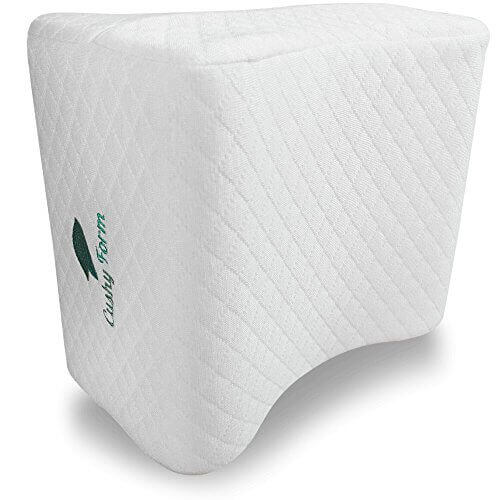
This Cushy Form wedge pillow is 25” x 24 ”x10” in dimension which leaves you enough room to turn and sleep on your side; the side position is one of the recommended sleeping positions if you suffer from sleep apnea.
This pillow is also a perfect dimension to enable you to sleep with a CPAP sleep machine. It also features a low elevation which can open up your airways, thus reducing sleep apnea.
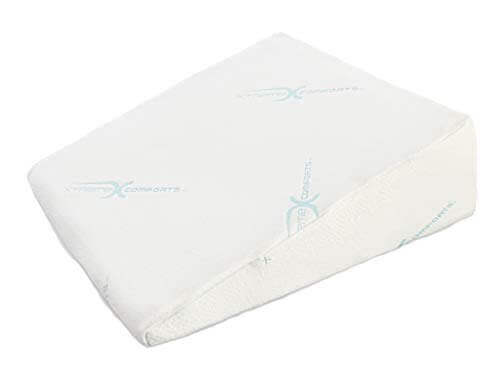
The Xtreme Comfort’s XW Wedge Pillow is a wedge pillow that can support a 30 to 45-degree sleeping angle. It is made entirely of body active memory foam that supports and hugs your body well.
As such, it can properly align your body and open your airways enough to prevent snoring. Its bamboo cover makes it hypoallergenic, breathable, and fragrant, which can help you sleep deeply.
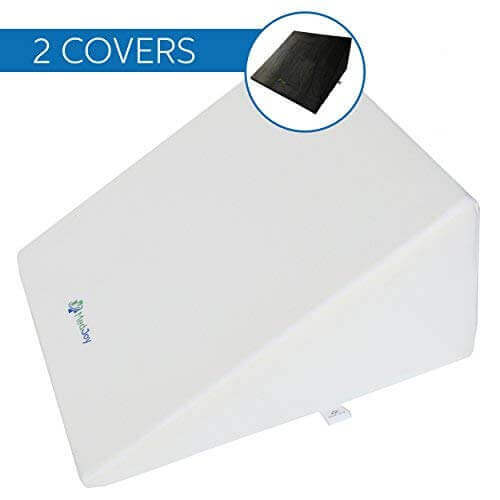
The Med Joy’s bed wedge pillow is 25” x 24” x 12” in dimension which can support you sleeping on your side, a recommended sleeping position if you suffer from sleep apnea. It features 1.5” of memory foam at the top and the bottom is filled with a firm base foam. The soft top contours to your back and neck, while the firm base ensures that you are adequately elevated throughout the night.
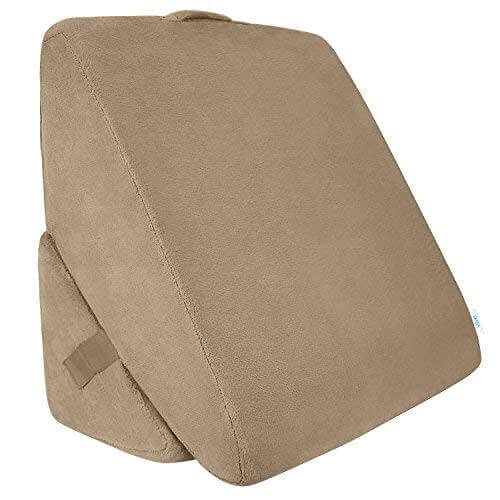
Xtra-Comfort’s triangular pillow is a folding memory foam wedge pillow, so the elevation can be adjusted. Sleep apnea sufferers need a pillow that does not only support their neck but is also comfortable to lie on. If you are not used to tapered pillows, then something that has an adjustable height may suit you.
Xtra-Comfort’s triangular pillow is lightweight and features a carry handle for traveling, so you can ensure a good night’s sleep wherever you are. The foam is dense, so you can ensure that you keep your elevation all throughout the night. As a result, you can minimize snoring and restless nights that are as a result of pillows that are too soft to open up your airways.
And the winner is ... the Med Joy’s bed wedge pillow! It stands out from the rest because of the strategic placement of the soft memory foam and firm base foam; the placement of the breathable memory foam is good enough to loosen the airways in your throat. As well, the placement of the firmer foam ensures that you maintain your sleeping position.
Even though Splendoress also places its foams strategically, Med Joy’s bed wedge pillow has a thicker memory foam. Thus, it can be more comfortable for heavier people. Also, the firm base foam is heavier so it can give you good traction, even if you toss and turn in your sleep.
Another good feature of the Med Joy’s bed wedge pillow is that it accommodates side sleepers, so it can be comfortable for sleep apnea sufferers who like shifting from back to side sleeping positions. Plus bonus points for Med Joy offering two hypoallergenic pillow covers.
Sleep apnea is characterized by loud snoring, difficulty breathing while sleeping, insomnia, and lethargy upon waking up. Though some people ignore sleep apnea, sleep apnea should be taken seriously since it can make you stop breathing many times during the night. This can limit the supply of oxygen to your body.
When sleep apnea sufferers lie flat on their back, their body collapses downward, and their throat relaxes too much. When the throat is too relaxed, it narrows the airways, making the sleeper snore and stop breathing. Gravity also plays a role in constricting the airways when lying on the back. As a result, if you suffer from sleep apnea, you should lie in an inclined position.
There are a few things to consider when buying a pillow to combat sleep apnea. Although side pillows, CPAP pillows, and contour pedic pillows can be useful for people with sleep apnea, the wedge pillow might be the most accessible, versatile, and useful. Wedge pillows align your spine from your head to your back.
The elevation fights off the gravity in your neck region, make your shoulders lie flat and elevate you well enough to open the airways in your throat. Here are some things you should consider before buying a wedge pillow.
Size
There is no optimum size for a wedge pillow. Nonetheless, it is ideal to find a wedge pillow that is wide enough to accommodate you when you sleep on your side or your stomach. When looking for one, try lying on your back, on your side, and on your stomach. (However, take note that wedge pillows aren’t the best kind for lying on your back.)
If you lay on your side, you should feel comfortable where the angle of elevation meets the flat of the bed. If you are using a CPAP machine, the stiff foam of the pillow should not interfere with your CPAP machine.
Elevation
According to a study by Patrick J. Hanly, MD., The Apnoea-Hypopnoea Index (AHI) or the severity of your sleep apnea can decrease depending on the elevation of your pillow. However, the difference in effect of a 0-degree angle to a 45-degree angle is not that significant. Nonetheless, in reality, some people get uncomfortable with an elevation that’s too high when they sleep on their back. As such, they may still snore, and have neck pains to boot! Ultimately, before buying a wedge pillow, you should try it out first as it is a long term investment.
Traction
Traction is the ability/inability of your pillow to stay in place. Weak traction means your pillow moves too much or your body cannot stay on your pillow whilst you sleep. A good wedge pillow that will help reduce sleep apnea will have good traction. You want to ensure that your pillow helps you remain properly aligned and that it does not move around on your pillow should not make you slip out of your first position, and it shouldn’t move around on your bed.
Sleep apnea is common in people who are overweight. As such, a foam that can support heavier body weights and maintain pillow elevation is key.
Memory foams are soft enough to sink and mold themselves to your head. At the same time, they are firm enough to not collapse under your weight and spring back to their previous form. They can help align your neck and spine while keeping your airways open, preventing you from snoring. Additionally, memory foam pillows are generally hypoallergenic, so you don’t have to worry about allergens blocking your airways while you sleep.
A great alternative to memory foams are latex foams. Latex foam pillows are just a firmer version of memory foam pillows - they support your pressure points or weight and mold themselves to your head. One main difference is that the former does not encourage side sleeping, while the latter supports it.
Newer memory foams are not only good at supporting your neck area but also opening your airways. Memory foams use breathable fibers that stimulate airflow - in and out of the pillow. Coolness or a temperature drop makes the environment optimal for sleeping.
The Med Joy’s wedge pillow is a great option if you suffer from sleep apnea because of its size, traction, and filling. Its size can accommodate back and side sleepers. The strategic placement of its denser foam makes it have good traction, so you don’t have to worry about losing your position whilst you sleep. Finally, its mix of dense foam and soft memory foam filling makes it soft and comfortable enough, yet you don’t have to worry about it losing its wedge shape.